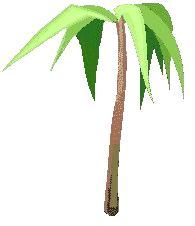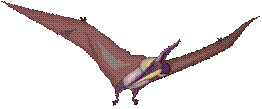


|
Early Expeditions in Papua New Guinea, 1994 and 1996 |
|
Live Pterosaur |
|
Living Pterosaur Investigations |

|
The two early living-pterosaur expeditions, 1994 and 1996, set the stage for the early 21st Century expeditions. The eyewitness testimonies obtained by Carl Baugh, Jim Blume, and Paul Nation inspired those who followed them. Thank the pioneers. |
|
While traveling through the South Pacific, Carl Baugh, founder and director of the Creation Evidence Museum in Glen Rose, Texas, heard reports of pterosaur-like creatures in Papua New Guinea. There he found Jim Blume, a missionary with much experience talking with natives about the large flying creatures. In 1994, with Paul Nation (an associate of Baugh’s), the men interviewed several natives of Umboi Island, northeast of the mainland of Papua New Guinea.
Eunice, wife of a school teacher, told the Americans that she had witnessed a ropen one night. On the northeast coast of Umboi, in 1993, she saw the glowing tail (little else was visible) approach the funeral procession; apparently the creature had smelled the body. After the mourners banged pots and yelled at the ropen, it flew away.
An old man told Jim Blume about another ropen attack years earlier: The large but skinny creature took the body out of the grave after the mourners had fallen asleep.
Of course ropens eat more than human corpses. An English-speaking islander told Baugh about the night his father was robbed of the fish left over the campfire while the men slept. The name they used for the creature they believed was responsible was “duwas” (called, on Umboi, “ropen”).
The 1994 expedition also gave the Americans an interview with two village men who had seen a ropen in daylight. They described how the ropen held itself upright on a tree trunk, very unlike the byung (the Flying Fox fruit bat) which hangs upside down from branches.
The 1996 expedition to Manus Island, Papua New Guinea, resulted in more than just interviews with eyewitnesses: Jim Blume saw a glowing form on a ridge above the shoreline. He watched the pulsating light that seemed to be about the size and shape of an Emperor Penguin, although only the glowing portion of the creature could be seen.
Although the 1994 and 1996 expeditions resulted in no photographs or videos of any ropen, they prepared the way for the early 21st Century expeditions. In late 2006 and early 2007, explorers in different parts of Papua New Guinea videotaped distant ropen lights. |

|
“Cryptozoology, the study of hidden or unknown animals, sits on a rock in the under-brush, not on a cushioned seat in the faculty lounge. It walks on the shadowy jungle trail, not on the dark marble floor of the university corridor. Lit with a spark of newborn sunlight peeping through the canopy, the cryptid hides, never venturing through the door of the dim specimen-storage room. Judge not the cryptozoologist by the dust on the shoe or the tear in the shirt, for his trail may lead to the creature with teeth enough for any biology textbook to be shredded.”
(Jonathan Whitcomb) |


|
(compare testimonies) |


|
Aside from its long tail, its upright posture on tree trunks, and its larger size, the ropen of Papua New Guinea differs from the Flying Fox fruit bat dramatically: The ropen glows at night.
A branch of these web pages supports chess instruction. |